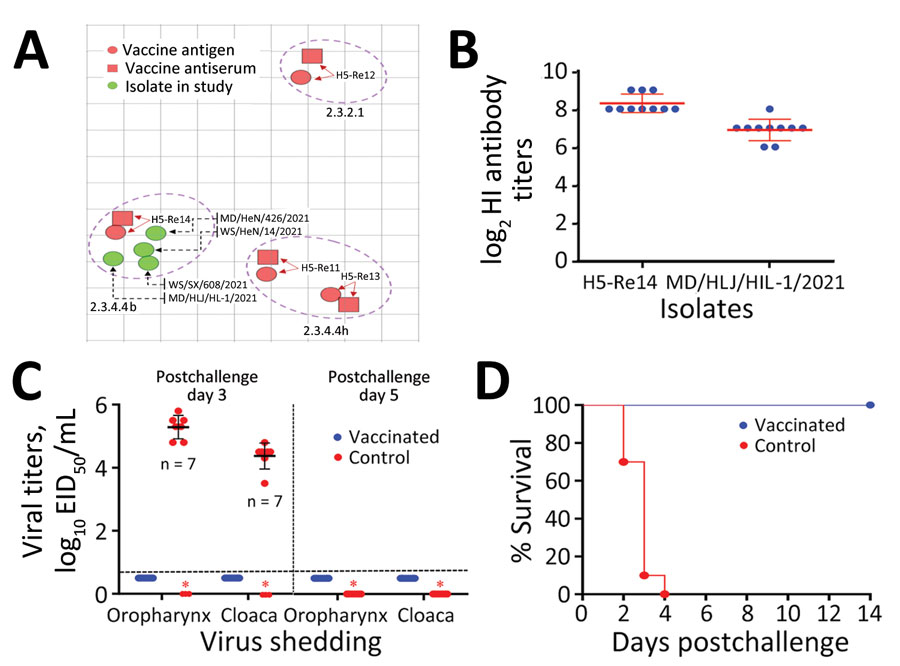Volume 29, Number 7—July 2023
Research
Highly Pathogenic Avian Influenza Virus (H5N1) Clade 2.3.4.4b Introduced by Wild Birds, China, 2021
Figure 3

Figure 3. Antigenic difference of avian influenza (H5N1) virus isolates with H5 vaccine strains and protective efficacy of H5 vaccine against the challenge of H5N1 virus. A) Antigenic cartography of H5N1 viruses. The map was generated by using Antigenic Cartography software (https://acmacs-web.antigenic-cartography.org); 1 unit (grid) represents a 2-fold change in the HI assay results (Appendix 2 Table 7). B) HI antibody titers of vaccinated chickens against the vaccine seed virus and the challenge strain. C) Virus shedding from chickens on postchallenge days 3 and 5. D) Survival patterns of chickens in the vaccinated and control groups after challenge with the indicated H5N1 virus. EID50, 50% egg infectious dose; HI, hemagglutination inhibition.
1These authors contributed equally to this article.